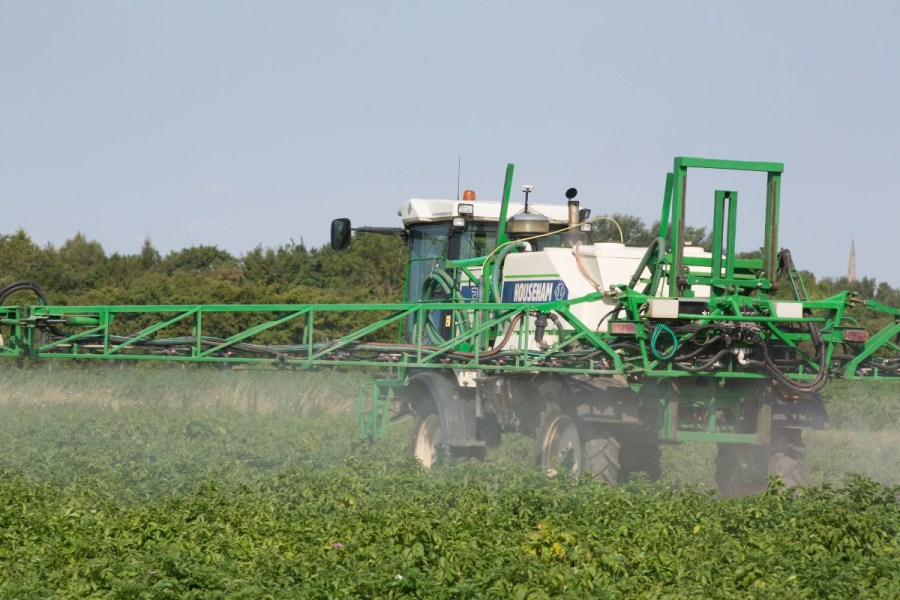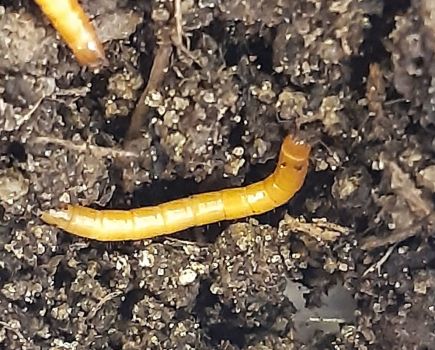Every day is a school day in farming, so what lessons have been learnt this season? CPM discusses late blight and alternaria with Eric Anderson.
A balanced fungicide strategy is the only viable option for the long-term.
By Lucy de la Pasture
As unsettled but humid weather came to characterise the summer, the threat of late blight (Phytopthora infestans) to potato crops soared. Where growers were unable to secure supplies of mancozeb, the risk of early blight (Alternaria solani and A. alternata) also became a threat, especially to susceptible maincrop varieties.
“Crops were always likely to come under pressure from alternaria and late blight at some point, the question was when,” says Eric Anderson, senior agronomist at Scottish Agronomy.
“The challenge was how best to manage the twin threat of early blight and late blight in crops at vastly different stages because of the protracted start to the season. For some, achieving this in practice was a logistical challenge,” he adds.
Mid-season forecasts from BlightSpy, the AHDB’s new and better forecasting tool, suggested postcode districts along the east coast of England and Scotland, the West Midlands and North Wales, the south-west of England and south-west Wales would be under most pressure, experiencing Hutton Periods on consecutive days.
This amounted to a significant intensification of the pressure facing crops compared with the early summer. The forecasts appeared accurate, with the first case of late blight confirmed as 6_A1 (Pink 6) in late July and 88 confirmed cases of blight by mid-August in AHDB’s Fight Against Blight testing.
While the threat of late blight is well recognised, Eric regards early blight as an equal threat. And while the two diseases may share similar sounding names, they are vastly different, he says.
“The name ‘early blight’ was proposed to differentiate this disease complex from late blight. At the time, early blight was prevalent in early maturing cultivars and less so in medium or late maturing ones, whereas late blight was more serious in medium and late maturing cultivars,” he explains.
A changing climate with more extremes of weather during the summer months is creating conditions more conducive to infection, disease spread and rapid development. That means the control of early blight will be a considerable challenge in the future, believes Eric.
Higher temperatures during the growing season result in favourable conditions for the pathogen. More abiotic stress (drought) increases the susceptibility of the plant and will therefore also promote disease progress, he says.
Historically there has been a lack of product stewardship against early blight, with programmes typically based on sequential treatments of products containing only a single mode of action. The consequence of this has been the development of strains exhibiting reduced sensitivity and, in some cases, resistance to certain modes of action – all of which means growers will find it more costly and complex to control.
“There’s a better than fair chance that early blight caught growers out this season, and it will likely catch others next year. The loss of mancozeb, and the incidental control of early blight it provided, serves to emphasise the difficulty confronting growers,” says Eric.
“To offset this cost increase, cultural practices – such as effective trash management across the rotation and proper control of volunteers and ground keepers will have to become the norm. It will also require the wider adoption and market acceptance of cultivars less susceptible to the disease and greater recognition of the necessity to practice active resistance management throughout the fungicide programme,” he adds.
“Crops under stress of any form, be it caused by nutrient deficiency, nematode infestations, or other diseases such as verticillium wilt, are more likely to succumb to A. alternata, the secondary form of the disease known to enter the crop via earlier damage. Verticillium dahliae (early dying syndrome) is likely to be of increasing prevalence for other reasons, so it has potential to hit performance too,” says Eric.
How growers manage the risk of both foliar diseases depends on a range of factors, notably crop potential, perceived risk, and the financial cost. Either way, it’s best managed through a pragmatic approach, he adds.
To slow the spread of resistant strains, products containing a single mode of action should either be mixed with a suitable partner or alternated with a different mode of action effective against the target pathogen to promote control, suggests Eric.
“We have to heed the lessons of the recent past and practice good product stewardship for early blight, in the same way we have learned to do with late blight. It may be that Caligula (fluopyram+ prothioconazole) sets the new standard for early blight control after mancozeb, but its use will have to be balanced with that of cheaper dual-purpose options, such as Amphore Plus/Carial Star (difenoconazole+ mandipropamid) while recognising that only difenoconazole provides activity against the target disease.”
Eric acknowledges that the solution won’t be the same for every grower but that to ignore resistance management could come at a cost further down the line. “You either pay a little more for Caligula with its built-in resistance management and be confident that crops will be protected or opt for a less expensive programme based around Signum (boscalid+ pyraclostrobin) or Revus (mandipropamid) plus Narita (difenconazole) or Amphore Plus/Carial Star and accept that the active ingredients are less well stewarded for effective future use.
“I would caution against the use of straight azoxystrobin for the control of early blight as resistance is widespread and there’s mounting evidence from Europe that strains of A. solani resistant to boscalid are spreading rapidly. Decisions are best taken after due consideration of the risk and the value of the crop to be protected,” he says.
“It’s not unusual for crops to be at vastly different stages; overcoming this may involve adopting a field-by-field approach. This will create its own difficulties,” he says. “A more considered integrated programme, where good cultural practices (to reduce soil borne inoculum) are carried out alongside the use of less susceptible cultivars, and a balanced fungicide strategy is the only viable option for the long-term,” he believes.
“An application of Ranman Top (cyazofamid) plus Enervin (ametoctradin) would cost upwards of £30/ha, in which case it would be cheaper to apply Infinito (fluopicolide+ propamocarb). As a result, my suggested course of action at the end of the season is Infinito followed by Ranman Top plus Enervin, followed by Infinito. This limits the cost while conferring the desired protection against tuber blight,” he concludes.
A disease of older plant tissue
Although A. solani and A. alternata are closely related and have many similar characteristics, their dispersal behaviour differs significantly. A. solani is a specific pathogen of potato (and outdoor tomato elsewhere in the world), whereas A. alternata has a wide host range including legumes, brassicas, carrots, beets, and several wild plant species. Spores of A. solani are produced on potato foliage and plant debris across a wide temperature range of 5-30°C (the optimum is 20°C).
External sources of inoculum play a larger role in spore introduction for A. alternata than for A. solani. A. alternata can be considered a ubiquitous fungus readily found on decaying leaves.
In contrast, A. solani overwinters primarily on infected crop debris and in the soil. Initial inoculum of A. solani is moved locally within and between potato fields. Compared with P. infestans, the initial dispersal range of A. solani is limited to the proximity of the overwintered inoculum with a reduction in spore density occurring within 400-600m, while dispersal distances can typically be measured in kilometres for P. infestans.
During the early months of the growing season, early blight develops first on fully expanded leaves near the soil surface and progresses slowly on newly emerged leaves in the upper canopy. The rate of disease spread increases after flowering and can be quite rapid later in the season, during the bulking period or when the plant is under stress.
Early blight is largely a disease of older plant tissues. Where positive infections are identified to species the saprophytic A. alternata, typically visually expresses first before the end of July and the more pathogenic A. solani comes in relatively later.




